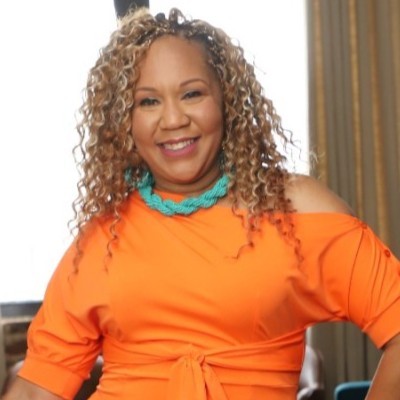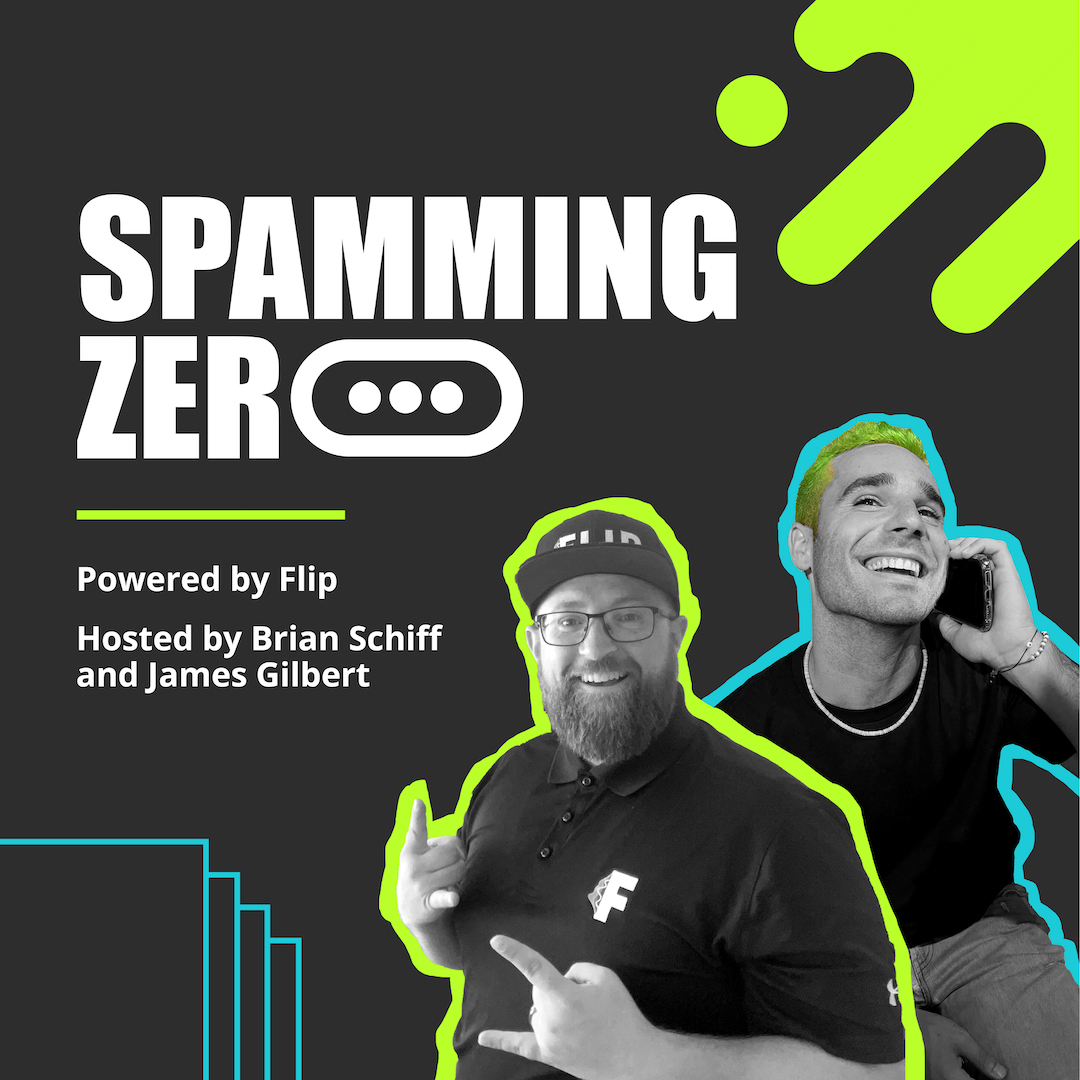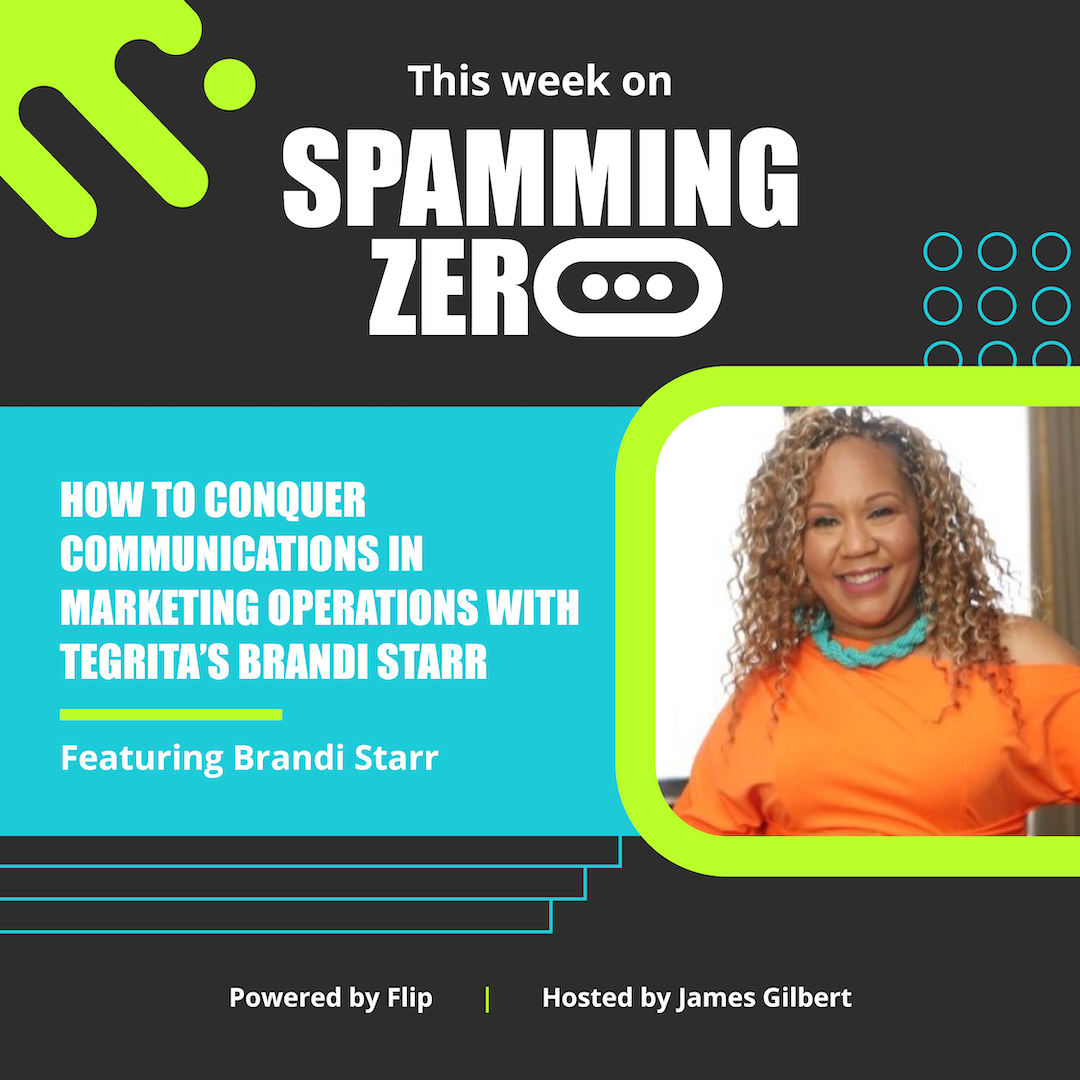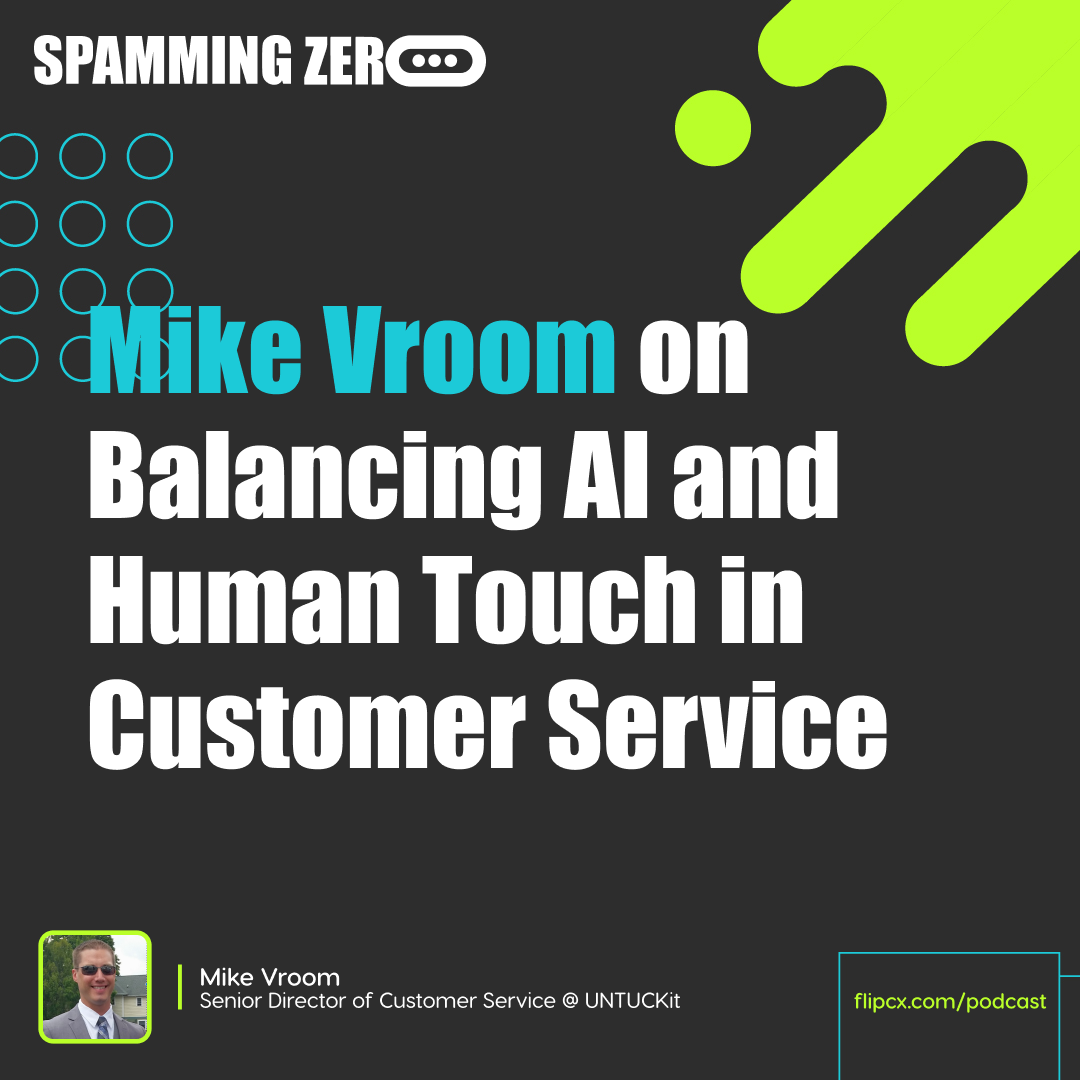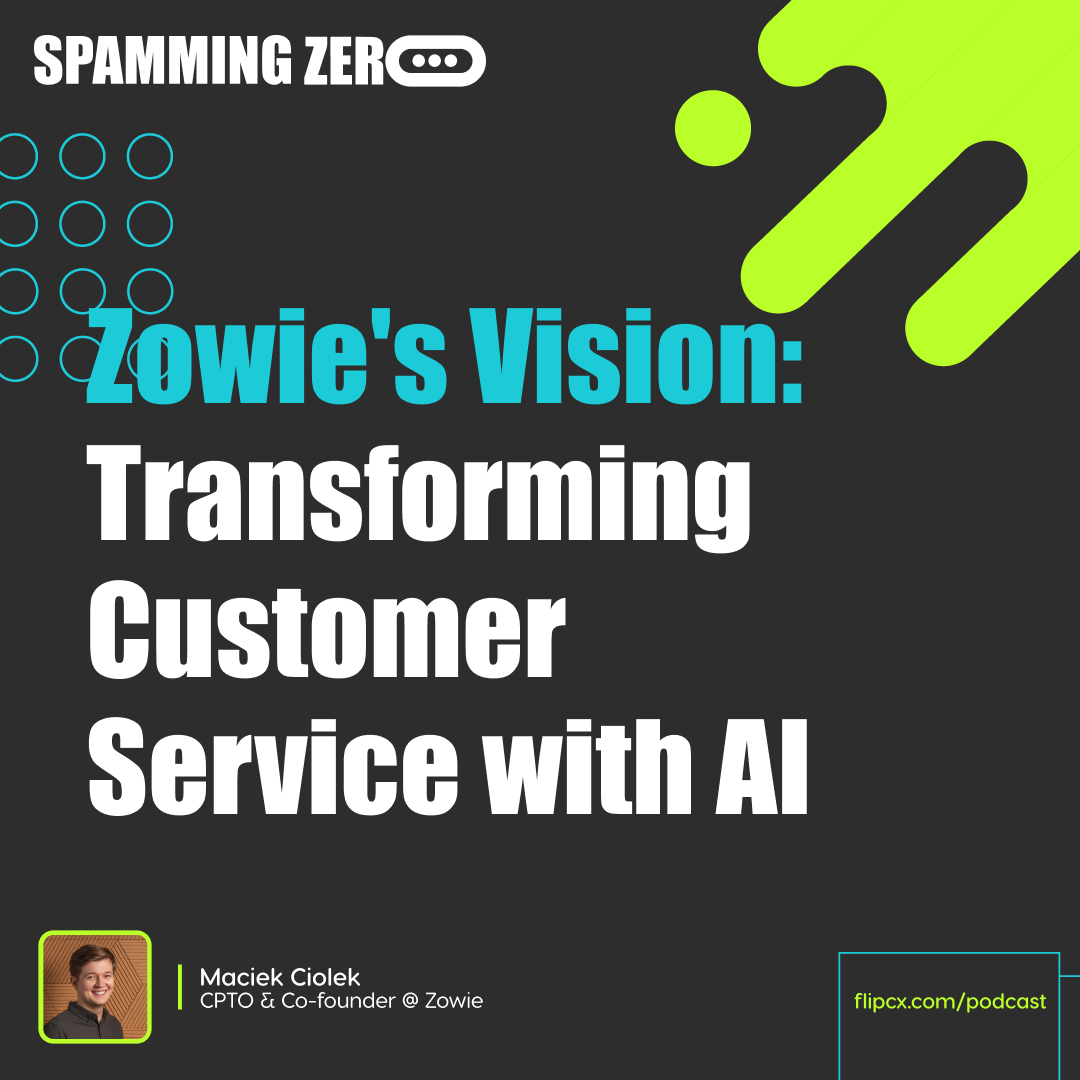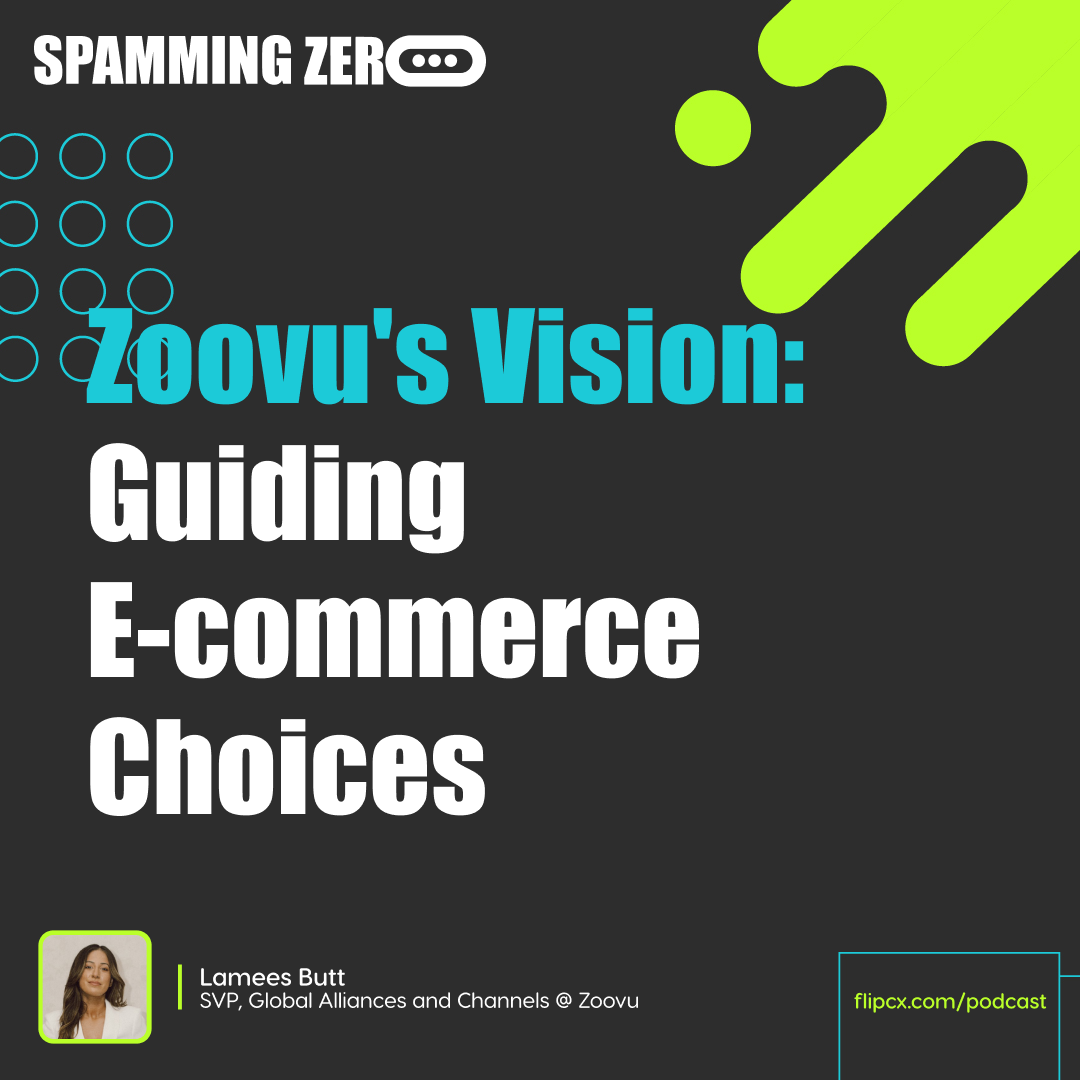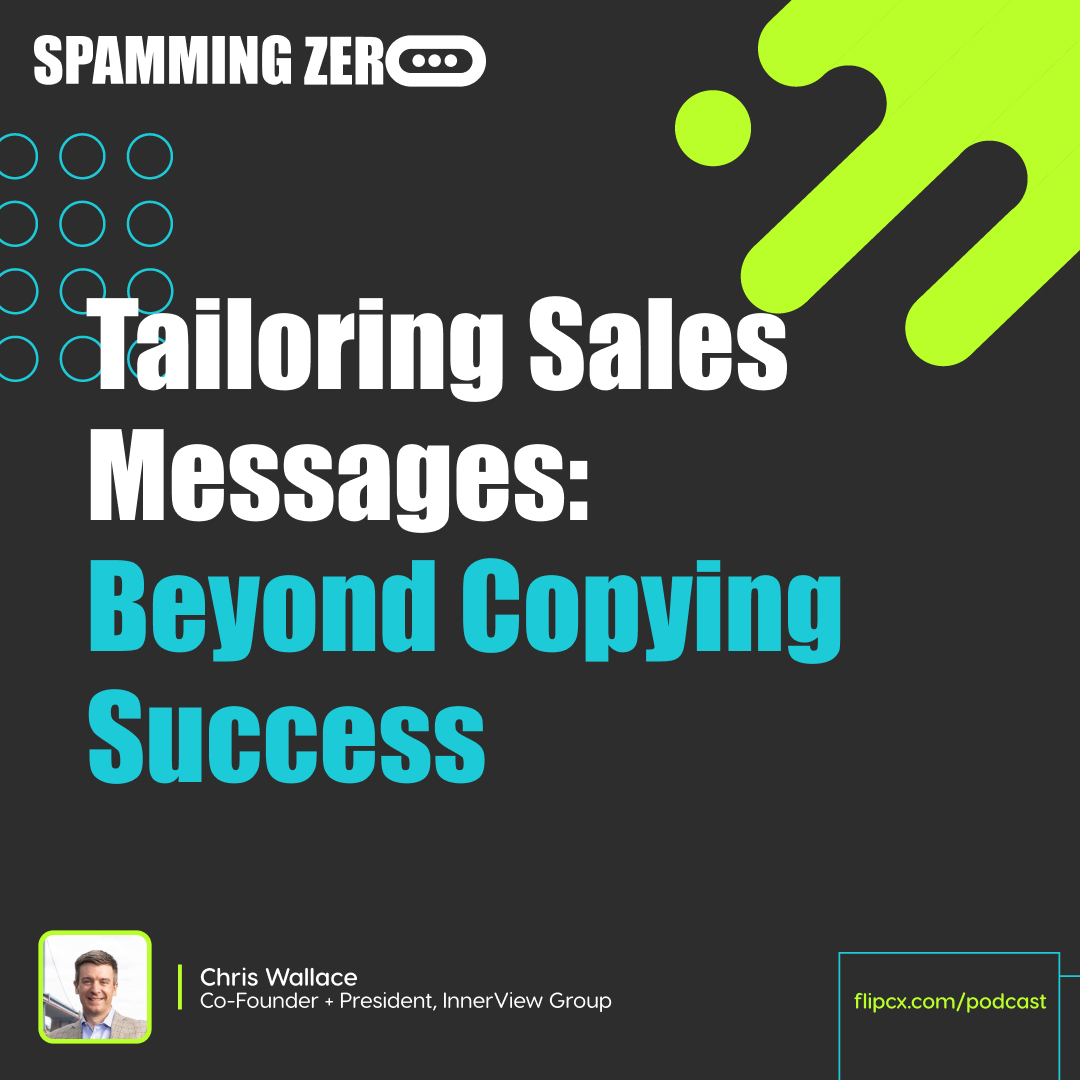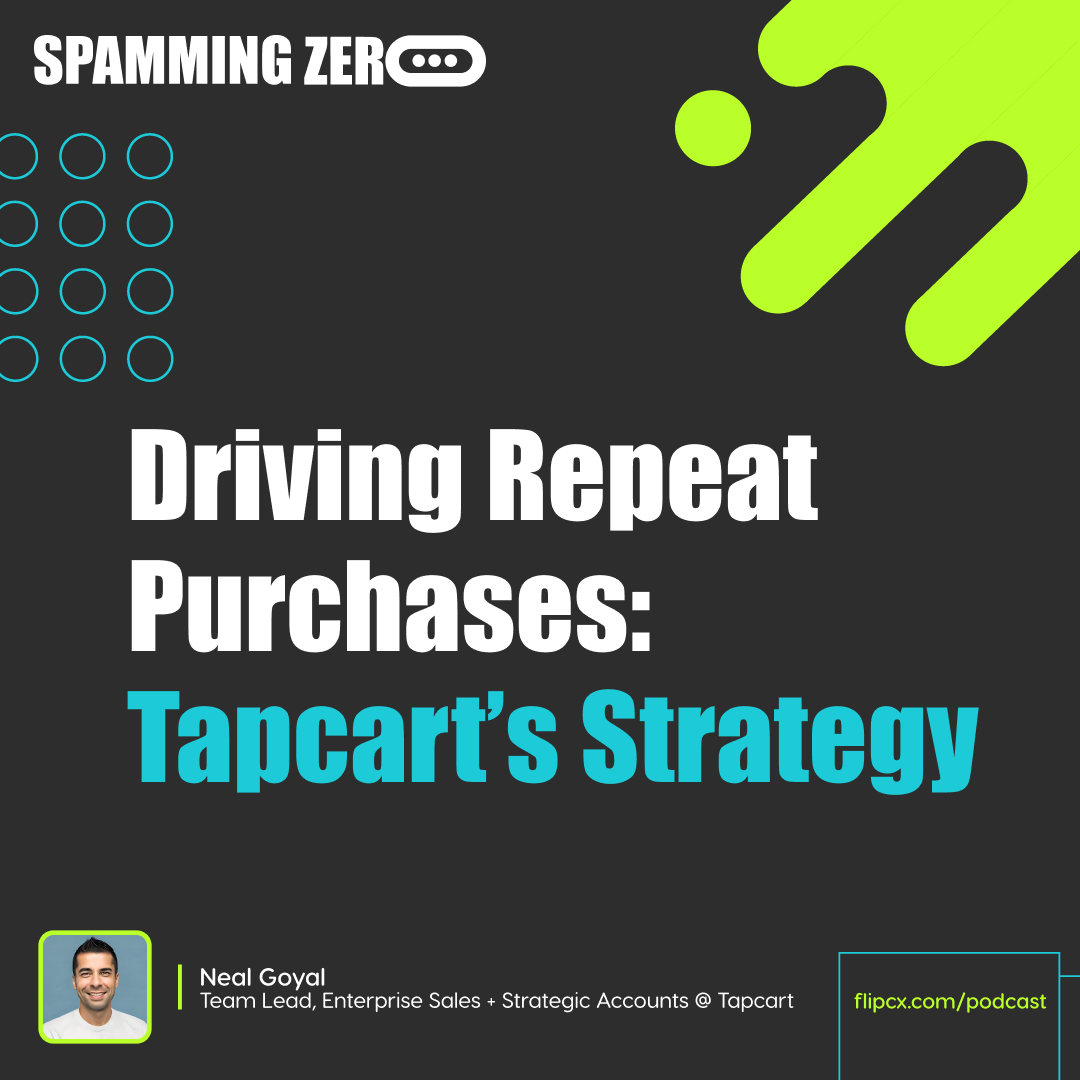Episode 51: How To Conquer Communications In Marketing Operations - With Tegrita’s Brandi Starr
- 0.5
- 1
- 1.25
- 1.5
- 1.75
- 2
James: May's sponsor of the Spamming Zero podcast is ttec. com. TTEC is a customer experience firm that focuses on several different industries, but one in particular is retail and e- commerce, to all of our listeners out there. Their website, again, if you need the phonetic spelling of that, it's T- T- E-C. com, TTEC. I love what they have on their About Us page, the power of big and the agility of small. They're a big company, but they have the agility to do a lot just like a small company does. I also love the fact that they're in six continents, 50 languages, employees globally is 69,000, and their client NPS is plus 71. Pretty awesome. Couple of other things about TTEC is they're customer obsessed, digitally empowered, and outcome focused. Some of the CX solutions they offer are customer care outsourcing, so if you need a BPO, they can be your partner, contact center outsourcing, as well as CX solutions and strategy. Reach out to ttec.com. I'm James.
Brian: And I'm Brian.
James: And this is Spamming Zero. What's up, everybody? Welcome to Spamming Zero. I'm feeling pretty good today because I got a haircut in the first time in a whole month and a half and my wife is finally in love with me again. So there's that. That's fun. I'm super excited because we are joined with Brandi Starr, who is from Tegrita. She is a top 50 woman in MarTech. Also the co- author of the CMO to CRO book and a fellow host of a podcast herself called Revenue Rehab. Welcome to the show, Brandi.
Brandi Starr: Thank you so much for having me.
James: Brandi, give the listeners a little bit of your background and what we're going to be talking about today.
Brandi Starr: Okay. So I am a marketer turned consultant. I have been in digital marketing for 23 years now. I always joke and say my claim to fame is when I started my marketing career. I was designing collateral for fax machines. Now I don't even know that my youngest kid knows what a fax machine is. But in that over the years, I have done a little bit of everything focusing mainly on communication strategy and how we orchestrate that communication journey to be really effective. So that is something that I work with a lot of my clients at Tegrita on. It is something that is near and dear to my heart. So this is what we're going to talk about today. We're going to talk about communications in the context of marketing operations, which doesn't sound super sexy, but it is super, super important, especially in a B2C environment, because that customer journey and every customer interaction is so important and operations is really what makes that happen in a seamless fashion.
James: Yes, I couldn't agree more. It's interesting because there's so many people out there that I think that would be listening to this show today that are in the direct to consumer space and e- commerce space and I think many of them actually are not marketing ops people. They're actually more like an e- commerce title. And that e- commerce title oversees so much. They oversee the customer journey, they oversee the tax side, they oversee the service side and the support side. They have to see so much and the communication streams are absolutely crucial to them. Before we dive into the topic though, I always like to break the ice a little bit with my guests, so I'm going to ask you a couple questions just to have some fun.
Brandi Starr: Okay.
James: Tell me about the funniest or most memorable customer interaction you've ever had in your career.
Brandi Starr: Let's see. Because your audience is B2C, I'm actually going to give you a personal example-
James: I really like this.
Brandi Starr: ...of something that blew my mind away. This was about a year or so ago, went to Cabo in Mexico for a wedding. We stayed at the resort that the bride and groom told us to stay at where the wedding was, so didn't really research it much. We get there and they tell me a butler comes with the room. I had never stayed at a resort that had a butler, didn't really know what they were good for, and had a situation where I had an allergic reaction. I have a lot of food allergies, a lot of food allergies, and there was an ingredient in something I ordered that was not listed on the menu. It wasn't super serious, I wasn't dying. I was breaking out in hives and had some other issues. I didn't know what to do because it was too late for the store, all these sorts of things. So I go back to the room, and on the way back to the room, I happen to run into the butler. And he's like, "Señora, are you okay?" And I was like, " No." And he asked me what was wrong. I'm like, " I'm going back to my room to lay down. I've had this allergic reaction. I look crazy." So he's like, " I've got you taken care of. I'll be back." I had no idea what that meant. But he came back with their version of Benadryl. He also had some sort of rub to put on my skin. He came back with all of these things and he said, " I checked and I know that these don't include ingredients that you're allergic to. Your food allergies are listed here." He knew who I was, he solved my problem. Then he also went a step further and the next morning he delivered me printed versions of the menus which told me... he X'd out the things on each menu from all six or seven restaurants at the resort to say, " Don't get these things based on what you've told me your allergies are." That blew me away.
James: That's wild.
Brandi Starr: I just wanted to lay down and just let it pass, and he went above and beyond so that I would not miss out on my vacation and to make sure that I did not experience this problem again in the future by ordering something else that may have had a hidden ingredient there. I was traveling with my best friend who is VP of IT. So we have a lot of these professional conversations and I was like, " Man, if all companies could get customer service down to this level," I was like, " think about the retention that would happen." Because I'm already looking at going back to that resort because I'm like, " I've never been that well taken care of on vacation."
James: I love this story. This has so much to unpack to it too because... and it perfectly aligns to our topic today, which is streamlined communication and how to get those communication streams, which by the way, there are many channels that we can do that in. But this particular channel was actually more in person. If they wouldn't have caught you, would that communication happened? And that's a whole nother ballgame there. So Brandi, what are some of the big aha moments that you feel like people get into when it comes to not having the greatest communication streams and not having the right infrastructure to be able to communicate to their customers?
Brandi Starr: I think the first thing is the technology. I'm a technologist at heart so that... it's kind of my default. But it is the connectedness of the various technologies that different groups use that actually enable that. To me, that is the foundation of, whatever your communication channels are, email, SMS, push, little devices that your butlers are walking around with in their hands, whatever those things are, the data has to flow. And that data flowing in my situation could have been the difference of life and death, because in the restaurant, they clearly didn't have the data that my butler had about my food allergies. So this was a really clear example of what could happen... And for most of our businesses, no one's going to die if we mess up the communication channel. But it's a really clear indicator of how when things work well, they work really well. And when the technology is broken and doesn't get the right information in front of the right people, it could have a pretty serious impact for your business.
James: I don't think that there's a lot of people out there that are trying to tackle the issue that happens when technologies don't talk together, especially with e- commerce. Actually, I shouldn't say especially with e- commerce. This goes across all industries. I mean, I made a pretty decent living and career off of this stuff as a ops person, and it's so true with e- commerce. That's why here at Flip we call this ecosystem. It is a bunch of technologies that either do or don't talk to each other. The closer they are to being able to talk to another piece of technology is what we are defining as the ecosystem. So our ecosystem of tech partners is super important because we don't want to just build a bunch of integrations with a bunch of tech partners that don't actually solve that same thing and don't believe in that same thing. So I think that's a big piece, is finding vendors that provide the technology, that also believe in the stickiness of those things working together. For example, we wouldn't stand a chance in e- commerce as an organization if we didn't integrate directly within the e- commerce platforms that people are having their customers buy on like Shopify and Magenta. So you've got to meet people where they're at. I think one of the things that I'd love for you to unpack a little bit too is it's oftentimes difficult, one, for people to identify vendors that can do that and that have that stickiness to them. Then number two, not only just identify, but being able to structure it in such a way where the vendor isn't making it impossible for them to do that because there's a lot of claims out there. So how do they get through some of that noise?
Brandi Starr: When I am thinking about the technology that you have in place, for every industry, you're going to have your core stuff. In e- commerce, it is obviously... the core thing is the platform that people are buying stuff on. That decision usually is clear in figuring out which platform is right for you. But the next layer to that is looking at, what are the other things that you need to be able to do and which of them natively play well together? Because a lot of technology vendors, we've moved away from these big platforms where you get the all- in- one and the current state of things is people piece together what works best for them. So in the consideration set when you're choosing whatever it is, an SMS platform or how you're going to do email or whatever, think about what has native integration. If you're using Shopify, there's lots of things that already integrate with Shopify. That's usually where I start. And where there is a reason why something doesn't fit or maybe there's not something available that has a native integration, this is where you start to get into the technical weeds, but looking at, what do their APIs look like? I won't go too deep there. I am not an API developer. But I do know that there are some systems that play well in the sandbox with others and other systems that don't. To me, no matter how good a tech is, if their backend is closed and there's no way to connect it, it's a hard no for me, because at the end of the day, I mean whether it's orchestrating the communication journey or being able to effectively report, we've got to be able to commingle information so that we can be effective as marketers.
James: I remember in... I think it was 2016 maybe. Maybe it was a little... I can't remember which year, somewhere around 2016 timeframe. I working as a CMO at a company called CloudCherry and we just got acquired by Cisco. Cisco was one of our big investors. So they bought the company because they wanted to leverage the software and they liked it. So we came into the fold under Cisco and Cisco's like, " Hey, James, you've done a lot of ops work before. Can you help us consolidate all of our technology across all these other companies that we've acquired?" I think it was a total of eight different companies that they wanted me to look at. Now, you can imagine it's hard doing it in one company, I had to look at eight eight and see how we could consolidate it. I remember one of the very first things I did was I did an audit across just the collaboration business unit of Cisco. That audit consisted of finding way more than necessary... I won't say the number, of CRMs. I'm talking about a CRM for customer support, I'm talking about a CRM for sales, and then a CRM for marketing. It was all over the place. I think also the big trouble that people get in is they don't have enough stakeholders looking at the bigger picture and looking at how these things can tie together. I mean, ultimately, the technology is only as good as the people behind it. So I think a lot of what has to happen is you have to create stickiness as people within the organization. So what's your advice for people to be the person that's also helping lead that stickiness and picking the right vendors that have it?
Brandi Starr: In my opinion, that's a customer experience role. I know by the standard definition of customer experience, a lot of times those people are looking at the web experience and user interfaces and those sorts of things. Those are clearly components of customer experience. But to me, there needs to be a person... whether they have a CX title or not, the title is less important, but there does have to be a person or a group who is responsible for looking at every touchpoint, every experience with the business that a customer has and understanding what that experience is like, how consistent it is, where it's broken, how those technologies work together. Because otherwise, every other department has some of their own goals. In marketing, if I'm a marketer, I want to work with the hot tools that's great for my career, all these sorts of things. If I'm in sales, I want what I want that I'm going to feel like I'm successful. You have all these people with competing needs and priorities that are not always centered around the customer. You have to have someone whose sole job is to put their self in the customer's shoes and make sure their experience with the brand is what it should be. That's my number one advice, is figure out where that role should live. Whether it's a CX person, whether you give them some made up title, I'm indifferent on that, but someone has to own that experience and every interaction and what that looks like and be able to pull the other teams in as it makes sense to create collaboration, get stuff done, buy technology. They don't have to own the pieces, but they have to own the big picture.
James: I really like that. And I really like the fact that you put the ownership on the customer experience folks, because I actually agree with you. I think you're spot on. I think we're seeing this also... You served in the B2B world for quite a while, right?
Brandi Starr: Yes. The majority of my career is been B2B.
James: Same. So what's interesting is so often in the B2B world, for those that are listening in the direct- to- consumer world, we look at the businesses and the brands in the direct- to- consumer world and we say, what can we learn from them? Because typically they do things more streamlined and efficient than the B2B world does. Personal opinion of mine.
Brandi Starr: I share that opinion.
James: So we look at them and we kind of put them on this pedestal a little bit. But what's interesting is I actually think the way that the B2B world is tackling ops and what is now referred to as rev ops is something that the direct- to- consumer world needs to learn from the B2B world in what they're doing. If you look at just HubSpot, okay, HubSpot, a really big company, they have completely invested in the idea of ops and rev ops and how it needs to be this function that helps every other function in the business operate more efficiently, more effectively. I get excited about it because... as all of us are in some cases data nerds and tech geeks, those kinds of things I do think are going to require a lens that's much different than today to look through. And that's the lens of... You can't just look at it from like, oh, this is what the journey's like online, this is what it's like once it goes over to customer success and customer service, this is what it's like in the sales process. You can't look at those individual journeys and think that a function can take care of those individual journeys anymore, because quite frankly, we as consumers and customers expect way more than that, right?
Brandi Starr: Yeah.
James: How do businesses manage the expectation that consumers and customers have today in a streamlined journey like that?
Brandi Starr: First piece, there's always voice of customer. You need to make sure that someone is talking to the customers. I listened to one of your earlier episodes, I think it was episode 41, where Salina, I think was her name, she talked a lot about the fact that marketers need to be talking to customer support reps because they're a key source of information. So that is one perspective of getting voice of customer, having means of talking directly to customers because you do have to understand what they want and how they want to interact, because in some cases, we can put our eggs in the wrong basket. We can make assumptions that people want to do things autonomously and we can automate so that you can handle everything without a human when our audience the only thing they may want is to be able to get to a human. So you do have to make sure that you really are getting that voice of customer perspective. Then the second phase of that is actually orchestrating it. This is where you talked at the beginning about e- commerce titles being so broad and there not really being operation titles in e- commerce. And again, I'm less caring about the title itself, more that there is someone that is looking at that because... I think Amazon is a company that does amazing at being able to allow you to interact with them however you want to. You want to return by going to an office store, you can, you want to shop at Kohl's and return as well, you want it instantly versus a credit, they make it so easy for no matter how you want to interact to give you that option. I don't know that all businesses have the resources to be like, " Pick your poison, how do you want to deal with us?" But if you have someone that owns figuring out how to operationalize that, once you hear from the customer and you know this is what that journey and interaction should look like, you have to have someone with that data, technology, process mindset to actually think that through and figure out how to put the pieces together. That's the key piece where I do agree with you wholeheartedly. E- commerce can definitely learn something from B2B because B2B has been investing a lot more time and resources in the ops function under different umbrellas. But really understanding what does that process and technology mindset look like and how do we drive the experience from there?
James: Completely agree. Brandi, we're going to shift gears for a second. It's kind of a new thing that we've been doing on the podcast, so you might not have heard this in the one that you've listened to. By the way, Brandi has no idea what's about to come.
Brandi Starr: Well, nervous.
James: We're going to play a little game.
Brandi Starr: Okay.
James: I'm going to ask you just some rapid fire questions and you... just first thing that comes to your head.
Brandi Starr: Okay.
James: Which do you prefer, CMO or CRO?
Brandi Starr: CRO is the wave of the future, just not in the current context.
James: All right, cool. Fill in the blank. Ice cream is... blank.
Brandi Starr: Extremely good.
James: What's your go- to flavor?
Brandi Starr: It's a toss up for me. Chocolate chip cookie dough is my number one. When I'm trying to be a little healthier, rainbow sherbet.
James: I like it. I was a little nervous to ask that question because I wasn't sure if that was one of the allergies, so I'm glad it's not.
Brandi Starr: It is not, thankfully.
James: The phone channel in customer experience is... blank.
Brandi Starr: So broken.
James: Ain't that the truth? It really is. I think it's the most broken part of all customer service. All right. There's a game called... and I don't like saying it because my kids listen to this podcast, so I don't swear as much as I used to. But it's called F***, Marry, Kill. Have you heard of this game?
Brandi Starr: I have.
James: We're going to play it. We're going to play this. All right?
Brandi Starr: Okay.
James: All right. So what would you kill when it comes to ops today?
Brandi Starr: The division between departments, the rev ops, marketing ops, sales op, all the different... ops is ops and they need to be one cohesive unit.
James: Okay. What are you falling in love with right now with ops?
Brandi Starr: Documentation.
James: Oh!
Brandi Starr: I almost feel ashamed for saying that, but it really... just even in our own business, as we've been documenting more of the operations processes, it has been such a game changer in refining and scaling that. Yeah, I am falling in love with documentation.
James: All right. What do you think is super sexy right now on ops? And you can't say documentation again.
Brandi Starr: No, documentation's definitely not super sexy. What's super sexy right now is the salaries. Ops has become such a hot function that it's been able to command a little bit higher salaries and more negotiating power because it is a little bit of a unicorn kind of role. So it has definitely made it a sexier career path.
James: Here's the truth bomb for all of our listeners out there. I wouldn't have stood a chance becoming a CMO without an ops background. That's the truth. It fast tracked me into a CMO role so fast.
Brandi Starr: Same.
James: I was lucky. So there's that. I can tell you that executives genuinely appreciate and value when you are data driven and when you can see through that lens more and more. It also gives you the ability to talk at a higher level and be more strategic in your thinking.
Brandi Starr: There's also the do better with less, that when things are operationalized, you can scale without having to also have matched the scale of your resources. So you can scale revenue without it being a one- to- one in the people budget, et cetera, which is always appealing to any leadership team trying to grow a business.
James: All right. So let's do a quick recap here. We've talked about how to pick vendors, how to create stickiness. We've talked about how you can become a leader within the organization driving those types of communication. Let's now talk about a little bit of the communication side of, when you do have powerful ops, how it can empower the customer experience. I'd love for you to give your lay of the land when it comes to how you feel like communication streams work well across channels. For example, you gave an example of Amazon, great example. Obviously, that's like the poster child. But providing the options. I've talked so much on this podcast about how much it drives me wild when people get rid of their phone number or they only have hours of operation when I am not working in the day. It drives me wild. So give our listeners the lay of the land of, if you were to go into an e- commerce brand today and they were like" Brandi, I want you to structure the best streamlined customer journey that you can when it comes to communication," where would you start? Where would it end?
Brandi Starr: I'd start with a map. It's consultant joke, we're always going to draw on a whiteboard. But that is truly where I would start because I think that people do well at mapping pieces of the journey. There's usually a lot of mapping that goes into, what is the web interaction? Where do they go? That sort of thing. But taking out those individual components and thinking about the broad web, because it usually ends up looking one of those crime show... connecting all the strings kind of things. But mapping out, before they're ever a customer, what does this look like to getting them to buy? Once they're a customer, how do we keep them happy? How do we service them? How do we keep them buying from us again? How do we get them to where they are one of our advocates and become a marketing channel for us and are talking about us? What are all those scenarios, including the ones we don't like, which is they have a problem, they hate us and they're talking bad about us negatively in public, all of the things. And trying to find what are those common journeys, because when you do it for the first time, it's going to feel overwhelming. If it doesn't feel overwhelming, you didn't do it right.
James: That's true.
Brandi Starr: Yeah. So then it is breaking it apart to say, these are the common paths. These are the most common paths to becoming a customer, these are the most common paths of an existing customer, these are the most common paths that lead to an advocate. And looking at what are those communications that need to happen? Something as simple... like I just ordered a small piece of technology online. It was like 50 bucks, so not major consideration purchase. I ordered it say on Monday, it was delivered on Thursday, and on Friday I got the email from them asking me to write a review. I hadn't even opened the package. It came Thursday night, the day after delivery you're asking me for a review. I don't know if I like it. So that's a missed opportunity for them because there's now not a trigger for me to go back once I do use the product to actually write a review, so now you've lost that opportunity. That's one example of, you haven't mapped this journey correct, you're accounting for delivery, you're not accounting for what's the average time for someone to actually use your thing or to have a strong opinion. Do I need to use it once to write a review? Do I need to use it five times? That's where the mapping comes in, is really trying to understand what's the most common path and mapping your communications. Where should it be an email? Where should it be a text? Are there scenarios where we've got an app or push notifications or geo- based geolocation targeting to cross- sell me? All of these things and then starting to map that out. That's where I start, and where I always end is optimization. So we go through... because we're going to make some assumptions on that front end where we're mapping things out, we're making our best guests based on what we know. We're going to put things in place, they're going to run for a while. We need to have that data. This is why connecting things and connecting things to our reporting platforms are important to know, how well did we do? Did we get it right? Did we assume the day after the delivery is the time to ask for a review but we got none? Okay, let's try five days after. Okay, now we got a ton, but not where we want to be. Okay, maybe we should try seven days after, or maybe we should follow it up with a text. It's that optimization piece that's important because you don't always get it right the first time. Benchmark data is just what other people have done, you got to benchmark against yourselves. So start with mapping out what needs to happen, end with... there is no end because we're constantly optimizing.
James: Really love the example you gave of the review too early. I get hit with that so much even in software. I'll start a free trial or something like that and I'm in it for 30 seconds and a review thing pops up. It's like, " Hey, how would you rate us?" I'm like, "What?"
Brandi Starr: You're like, " I'm still waiting for my password."
James: By the way, there are people out there that just because you did that are going to rate you bad. So how much is that actually impacting your NPS and your CSAT scores? So you got to really think about this. There's people out there that might disagree with mapping the journey. I'm not one of them. I have talked about how important that is. You can learn so much from it. You can learn where your gaps are and you can learn where you're not thinking about. I also think it's extremely important just to add to what you're saying, that you don't do the mapping in a silo.
Brandi Starr: Yes.
James: Because too often from my experience is those that are in charge of trying to figure this out will go through a mapping exercise. But then they didn't involve stakeholders that need to be involved in it. So then they build this map, they're like, " Yeah, this is great. This is where we're going to tackle. These are what we feel like our priority." Then they go to stakeholders, potentially leadership, and leadership's like, " You didn't think about this, this, or this." And that person's like, " Well, I didn't even know."
Brandi Starr: I had that happen. Facilitating those conversations and mapping is one of the things that we do. Had planned, I gave them direction on, here's the roles you need to invite, all the prep. I get there and it's marketing and sales in the room. And I'm like, " Are the other people running late?" And they're like, " We decided not to invite them." And I'm like, " You have a customer success team. You have a customer support team." And then even within the sales team, there were multiple sales teams. I'm like, " We got to have everyone represented or it becomes a one- sided journey." Then there was this scramble of, let's run around... This was back when people were still in offices, so it was a scramble to run around the building and at the last minute, get people to come participate in this. There were so many aha moments of someone in customer support saying, " Yeah, after they interact with us, there's three emails that go out from customer support. If they were pissed off, then we also do this other thing." Marketing is like sending, " Come buy more of our stuff," while customer service is sending, " Sorry you're pissed off at us." And marketing was like, "We had no idea you guys were sending all of these communications and doing all of these things." And I'm just like, " This is why everyone has to be here." So yes, I agree wholeheartedly, any role that has an interaction along the process needs to be represented in some form or fashion. And whether they're in the room or... In some cases, we'll do stakeholder interviews in advance because sometimes it's too much to get that many people in a room. For large companies, it becomes too much. But we at least have to get that input in some way. So it's like if you don't take anything else away from this, if you're going to try to map your journey, big or small, make sure you have your stakeholders. That's a great point, James.
James: One of the most memorable experiences of doing this was... I can't remember the year, but I was working for a Fortune 500 company called AGCO. They are a tractor manufacturer and they host 11 different brands under their umbrella of AGCO. You can imagine having to do a journey mapping exercise. We were restructuring the CRM across the whole organization. We were building specific inbound and websites for each brand that rolled up into one. I remember this being a five- day workshop across a big company like that. And I'm talking like 30, 40 people. It was so many people because you had people that owned specific areas of each brand, So you had to bring them in and the stakeholders for each one of them. I remember after it, as we started rolling out the new websites and as we started rolling out different functions of revenue streams and things that we were going to try out, and yours truly at this particular time early in my career was responsible for rolling out a chat function. This was before, by the way, chat was really big. It was new. We wanted to see if farmers would engage in a chat and everyone was like, " No, they're not going to do it. They're not going to do it." We fundamentally disagreed. We felt like they would do it. And the reason why they would do it is because, well, I mean, they drive their tractors from an iPad, so why not? Why wouldn't they? Right? So we rolled out this chat function, and I remember within the first week, we had one of the largest deals in AGCO's history come through chat. We engaged with them, talked to the farmer, provided a really unique experience for them, sent that over to the dealer, and the dealer was like, " Where did this come from and how did you know about it?" And we're like, " Well, we put it up on the website and they engaged with it." This was something that we learned from the journey map, that we wanted to make sure that every brand was taken care of. And this was a particular brand that had an e- commerce play. You could buy a tractor and the implements for the tractor online and then work with the dealer to get it fulfilled. It became such a big thing that actually became one of the primary channels of revenue for AGCO for quite a while when I was there, was this online chat. Every day, people were so blown away that people out on their farms wanted to get online and go through chat. The reason why I bring this up is because as you go through the experience of mapping it out, you're going to discover things that you can test and try that are going to challenge the status quo of maybe people within your own organization. It's important that you see those tests through. You may find that it doesn't work, but you may find that it works and that you unlock something that's never been unlocked. And that value cannot come to the surface without doing that exercise.
Brandi Starr: Yeah, I agree completely. I think a key component in that is having leadership that is open to trying things. I know sometimes that is the uphill battle that I face, is it's like just getting the buy- in, that we're going to try something different. We're not going to commit to it, we're just going to try. It's okay. Then it is things like that that something that you fundamentally don't think is accurate turns out to be the thing that completely revolutionizes the business. So yeah, that is a key part of that. And you only have those ahas when you actually understand what your customers are going through, how they buy, when they buy, why they buy, what they're doing when they buy, all of those things. It does enable you to start having those ideas. Well, okay, if they're driving a tractor from an iPad, what if we gave them a chat icon right there? How could that impact this? So that's awesome. Yeah, AGCO is actually right down the street from me, or at least one of their locations, so I'm very familiar.
James: In Duluth.
Brandi Starr: Yeah.
James: Yeah. We used to live in Georgia, so we were in that area a lot.
Brandi Starr: Okay. Yeah, they're probably 15 minutes from me, so I'm very familiar with them.
James: Yeah. Yeah, they got those big, old... What's funny is I'm sure some of the listeners that are listening today are probably like, " Whatever." They don't drive tractors from iPads and all. Seriously, this was part of the technology. You think Teslas are cool today? Imagine a Tesla that's worth four times as much money. That's what these farmers are driving to produce your foods that you buy at your grocery stores. It's pretty wild the technology that they have, getting it down to like the inch and... sorry, tangent.
Brandi Starr: We can going to have a whole farm discussion.
James: Brandi, we are out of time. It's been an absolute pleasure to have you on the show today. Where can people find you? Where can people learn more about you?
Brandi Starr: I'm always on LinkedIn, Brandi Starr, with two Rs. I'm usually the first one to come up. My podcast is Revenue Rehab, so revenuerehab. live. And of course tegrita. com, you can always find me there. Would love to hear feedback from any of the listeners if this resonated with you. If you want to challenge my thinking, always open for a good discussion. When you connect with me on LinkedIn, let me know you heard me here because I think we all get hit with the abundance of salespeople trying to connect. Always helps to cut through the noise.
James: I totally agree. You can't control that inbox anymore.
Brandi Starr: No, not at all. So it always helps when people have a note of who they are or why they want to connect.
James: Brandi, thank you again for joining us. If you have not yet subscribed to the podcast, please do so. Just give us a star rating. We don't expect you to give a full- fledged written out rating if you don't want to. But that star rating makes a big difference for us. It means we can keep going. So let us know what you think. You can reach out to me on LinkedIn as well. You can direct mail me or you can just send me an email at james @ flipcx.com. I'd be happy to hear from you. Thanks again.
DESCRIPTION
There’s no doubt about it… Streamlined, clear, effective communications in Marketing Ops is an ART.
Full stop.
So, it only made sense that we track down a true artist on the subject to share her brilliant know-how with our listeners.
Brandi Starr is COO at Tegrita, Podcast Host of Revenue Rehab, an International Best-Selling Author, and our honored guest this week on Spamming Zero.
What’s Covered?
- A bit about Brandi’s 23 years in digital marketing
- The right infrastructure to successfully communicate with customers
- How to tackle the issues when technologies are NOT communicating
- Identifying vendors with the right “stickiness”
- What B2B and DTC can learn from each other
- VOC & Managing customer expectations in a streamlined journey
- Non-negotiable: having cross departmental buy in
- How our expert incorporates journey mapping
- And more
Ready for more fantastic Spamming Zero conversations ahead? Listen, rate, and subscribe on YouTube, Casted, Apple Podcast, or Google podcasts.
Today's Host
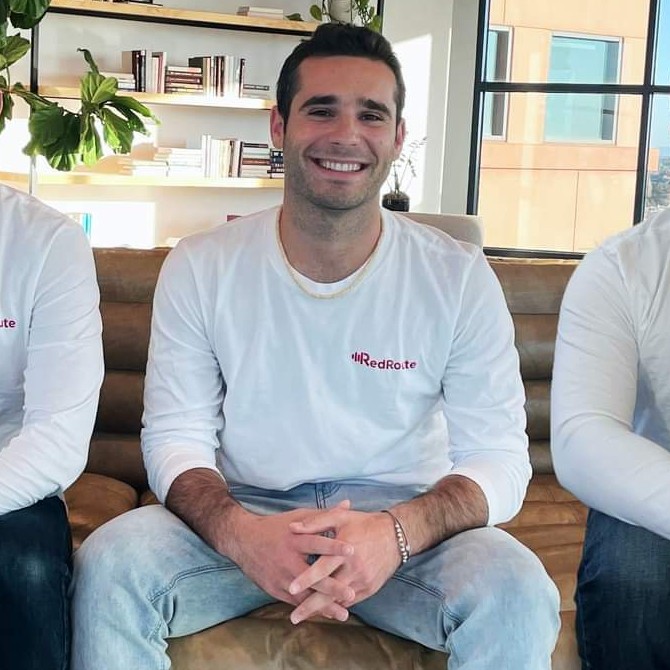
Brian Schiff
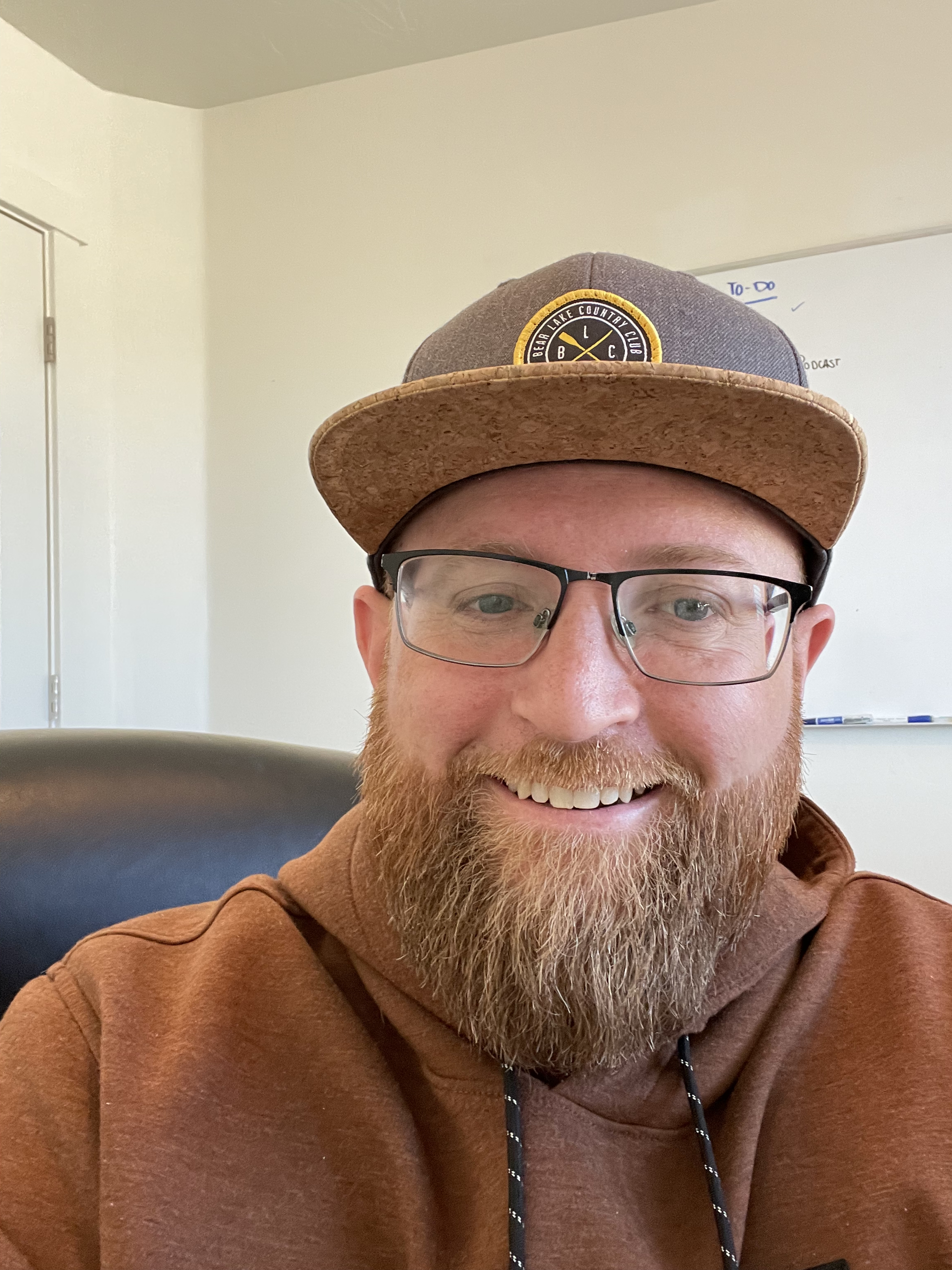
James Gilbert
Today's Guests
